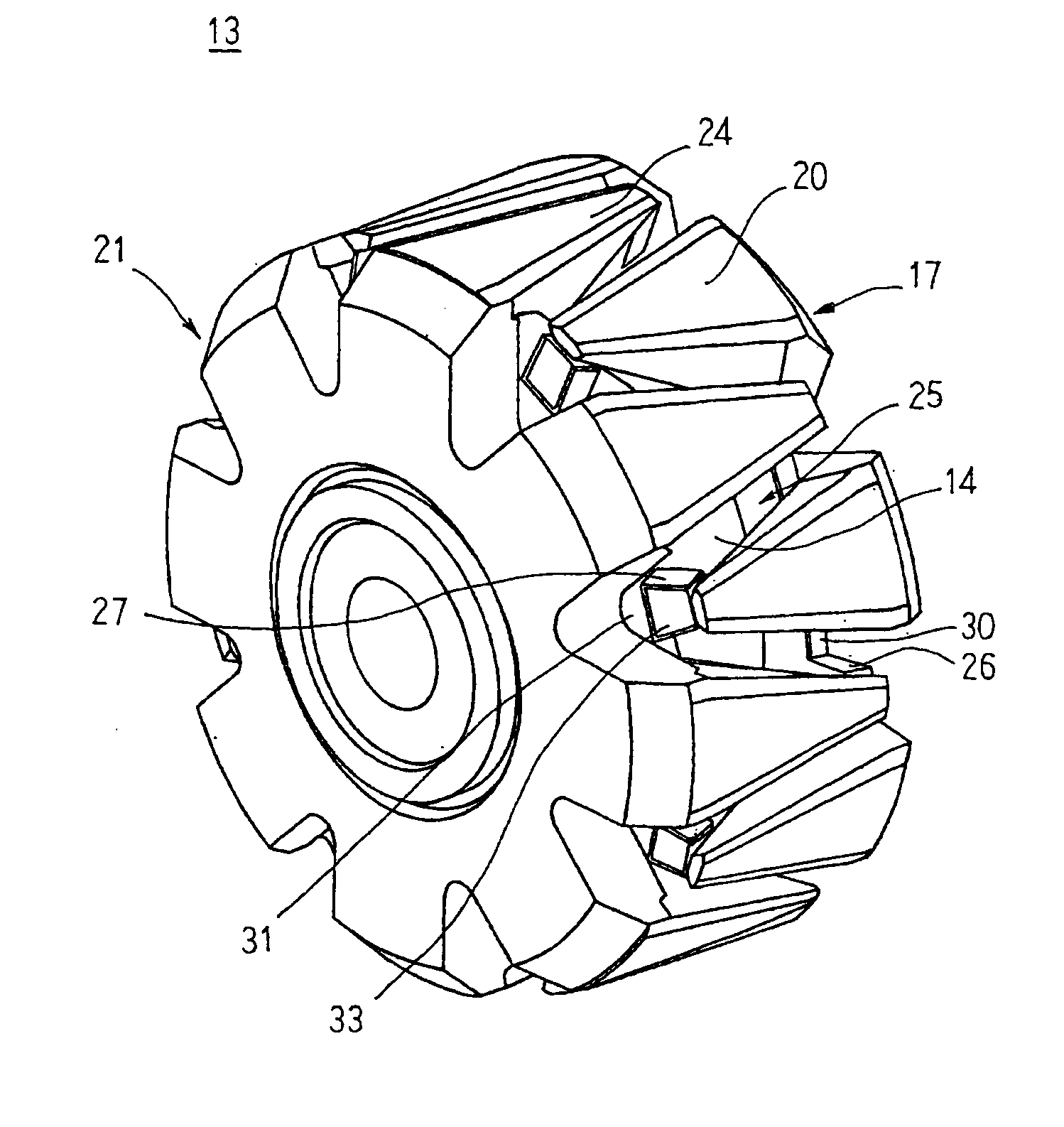Dynamoelectric machine
a dynamoelectric machine and dynamoelectric technology, applied in the direction of magnetic circuit rotating parts, magnetic circuit shape/form/construction, windings, etc., can solve the problems of increasing the rotor inertia, and invariably increasing the size of the alternator, so as to reduce assembly man-hours, facilitate the holding of permanent magnets, and strengthen the holding construction
- Summary
- Abstract
- Description
- Claims
- Application Information
AI Technical Summary
Benefits of technology
Problems solved by technology
Method used
Image
Examples
embodiment 1
[0066]FIG. 1 is a cross section that schematically shows an automotive alternator according to Embodiment 1 of the present invention, FIG. 2 is a perspective that shows a rotor that can be used in the automotive alternator according to Embodiment 1 of the present invention, FIG. 3 is a perspective that shows a bobbin into which permanent magnets have been incorporated in the automotive alternator according to Embodiment 1 of the present invention, and FIGS. 4 and 5 are respective schematic diagrams for explaining flow of magnetic flux in the automotive alternator according to Embodiment 1 of the present invention.
[0067]In FIGS. 1 through 3, an automotive alternator 1 includes: a case 4 that is constituted by a front bracket 2 and a rear bracket 3 that are each made of aluminum in an approximate cup shape; a rotor 13 that is rotatably disposed inside the case 4 such that a shaft 16 is supported by means of bearings 5 in the case 4; a pulley 6 that is fixed to an end portion of the sh...
embodiment 2
[0101]FIG. 8 is a perspective that shows a rotor that can be used in an automotive alternator according to Embodiment 2 of the present invention, and FIG. 9 is an exploded perspective that explains a configuration of the rotor that can be used in the automotive alternator according to Embodiment 2 of the present invention.
[0102]In FIGS. 8 and 9, first magnet seat portions 30A are disposed so as to project integrally on portions of a first yoke portion 19 between adjacent first claw-shaped magnetic pole portions 20, and outer circumferential surfaces thereof are formed into cylindrical surfaces that have an axial center of a first pole core body 17A as a central axis. First interfitting grooves 28 that function as interfitting recess portions that have trapezoidal cross sections perpendicular to the central axis of the first pole core body 17A are recessed into portions of outer circumferential surfaces of the first magnet seat portions 30A that face inner circumferential surfaces ne...
embodiment 3
[0107]FIG. 10 is a cross section that schematically shows an automotive alternator according to Embodiment 3 of the present invention, and FIG. 11 is a perspective that shows a bobbin into which permanent magnets have been incorporated in the automotive alternator according to Embodiment 3 of the present invention.
[0108]In FIGS. 10 and 11, first magnet seat portions 30B are disposed so as to project integrally on portions of a first yoke portion 19 between adjacent first claw-shaped magnetic pole portions 20, and outer circumferential surfaces thereof are formed into flat surfaces that are tangential to cylindrical surfaces that have an axial center of a first pole core body 17B as a central axis. First magnet housing portions 26B are prepared into angular U-shaped tubular bodies in which a cross section that is perpendicular to a central axis of a drum portion 25a of a bobbin 25B is trapezoidal, and axially inner sides are closed by a flange portion 25b. Bottom surfaces of the angu...
PUM
 Login to View More
Login to View More Abstract
Description
Claims
Application Information
 Login to View More
Login to View More - R&D
- Intellectual Property
- Life Sciences
- Materials
- Tech Scout
- Unparalleled Data Quality
- Higher Quality Content
- 60% Fewer Hallucinations
Browse by: Latest US Patents, China's latest patents, Technical Efficacy Thesaurus, Application Domain, Technology Topic, Popular Technical Reports.
© 2025 PatSnap. All rights reserved.Legal|Privacy policy|Modern Slavery Act Transparency Statement|Sitemap|About US| Contact US: help@patsnap.com



